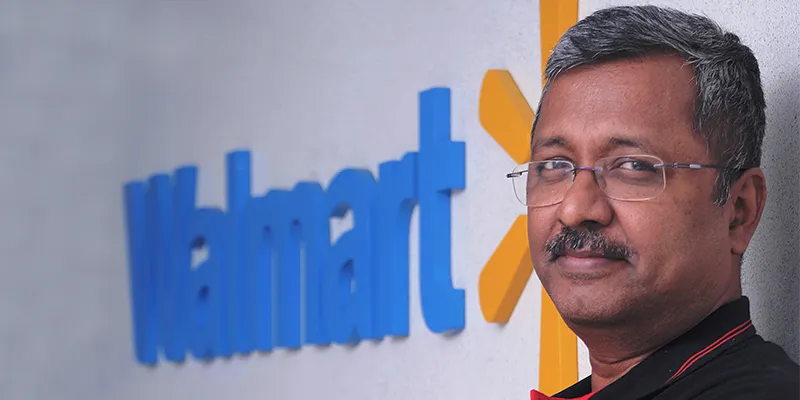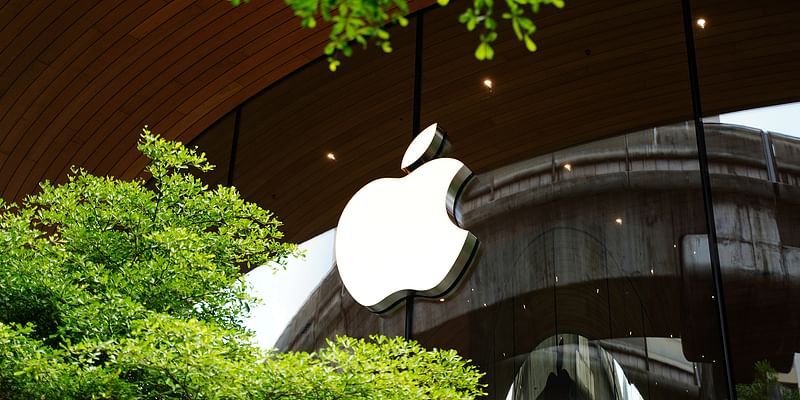WalmartLabs Bengaluru handles 260M consumers a week, 5 times the scale of Flipkart
Ever wondered if the Amercians were crazy for braving the biting cold, battling the icy daggers of the wind, to queue up outside a retail store during Thanksgiving?
It is because at that time the price of a product drops almost by 75 percent. Say, a gaming console that usually costs Rs 21,000 would be available for Rs 5,000 that day. So that explains why people go a little crazy over Black Friday sales in the US. But do you know that at the 11528 stores of Walmart’s—the world’s largest company in terms of revenue—the discounting and understanding of consumer behaviour is handled by WalmartLabs, the retailer's technology hub, right in our very own Bengaluru? Behind the scenes, building the science, in WalmartLabs India is its MD Jayakumar K and his team of more than 1000 engineers.

This reporter was in the towns of Akron and Kent, Ohio, visiting the two Walmarts in the region and noticed that consumers there, just like the ones in India, are really after deals. Deals are made available online too, and like Flipkart’s big sale days, products displayed are sold in a matter of seconds. The only difference is that the sales in the US happen at a scale that is yet to be experienced by the Indian e-commerce or retail industry.
Walmart alone handled 260 million consumers on this year’s Black Friday, which concluded on November 26. Its entire technology stack was prepared to handle this massive scale from Bengaluru, San Francisco and Sao Paulo, which prepared the company’s stores, e-commerce site, supply chain and manufacturers to serve customers. This preparation took ten months with zero downtime, all for just a week-long shopping mania that began on November 20.
“We work with terra bytes of data to predict consumer demand for the next Black Friday sale,” says Jayakumar K, Managing Director, WalmartLabs, adding that for the prediction to happen for the next year, the entire system’s software is revamped or rewritten before they embark on data crunching for the entire supply chain.
Walmart works with more than 50,000 vendors globally and plans their supply schedule too. Some say that Walmart was ramping up its R&D to take on large digital e-commerce competitors. WalmartLabs in Brazil and the USA, along with their India counterparts, are focused on making the retailer a global technology powerhouse.
In its annual report, the company states
“Investments in e-commerce and digital initiatives are expected to range between $1.2 and $1.5 billion in fiscal year 2016, up from approximately $1.0 billion, estimated for 2015.”
This is how WalmartLabs at Bengaluru studies and analyses massive data sets to prepare the world’s largest company for a busy sale:
Understanding consumer buying habits by region: It looks at historic and previous year’s data to see what people would buy the coming year and it maps this with demographic data of the region.
Understanding the income levels by region: Walmart can tell, for example, that a region is creating more or less jobs. It uses this data to plan its inventory based on the financial strength of the region.
Studying more than 50,000 vendors or consumer goods or manufacturers and their performance by brand: From shrimp to bullets to clothing, Walmart works with small and large businesses that supply to the US region. WalmartLabs prepares the retailer to work with its vendors and understand the success of these private brands by region.
Stress-testing the e-commerce platform to handle the load: E-commerce is personalised based on buying habits too.
Bring down the pricing to benefit customers: By understanding consumer behaviour they can increase basket size and reduce pricing.
WalmartLabs’ vision
- To increase developers to work on Walmart’s open source cloud interoperability platform OneOps.
- To acquire startups. Globally, it has acquired 15 companies.
- It wants to create seamless experience between digital and physical stores.
- It uses IBM Watson to predict impact on retailing by culling data on demand, planned production and consumption cycles. The system studies policy and other variables that impact supply.
- E-commerce on top of strategy to acquire more customers.
- Prepare warehouses for dynamic buying.
- Work on future concepts like connected car-based retailing purchases.
- Build shopping experiences across formats, for example, order at work and collect at store.
- To experiment with Internet of Things (IoT) and virtual reality (VR) to enhance shopping experience.
- To further enhance digital payment systems.
Walmart does not go after off-the-shelf products but works on its own tech specs. Its e-commerce platform, for example, is its own.
Learnings in India
Omnichannel retailing is still in its infancy, although strategies are in place to increase a seamless digital and physical shopping experience.
Indian retailers like Future Group are working on such high-end analytics and planning. For the last year, it has been working with analytics firm Manthan to create a platform that can pinpoint consumer demand and consumption by region. Others, like Aditya Birla Group’s retail arm TrendIn, work with startups and off-the-shelf products to understand consumer habits. They are also creating platforms that can prepare supply chains for a ‘phygital’ world. Arvind Retail, Reliance Retail and others are investing in technology to predict their consumer and drop prices. Brick-and-mortar retail players in India have realised that retailing is not about opening stores across the country; it is about reducing prices to serve consumers. This is why today the kirana or mom-and-pop stores succeed,” says Prem Kumar, founder of SnapBizz, a retail tech platform provider for traditional retailers.
Even e-commerce companies are yet to create a streamlined data for supply chain based on consumer data. Flipkart and Amazon India are building a complete new data set for their business. In the end, the company that crunches data and predicts behaviour patterns wins.
For example, WalmartLabs uses weather data to predict physical damage to its stores. “Data and algorithms are the future. We use several variables to predict spikes in shopping or even understand how natural disasters can impact stores,” says Jayakumar of Walmart Labs.











